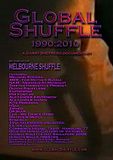In a spiritual continuation of my Malta and Hungary trips this year, I'm going even futher east to spend a week celebrating my girlfriend's mother in law's birthday with her entire family, 16 people in all. The destination is the black sea coast of Bulgaria, a prime tourist destination for Swedes these days. But, what's more interesting for me, also a country with a fascinating culture of pop music. As usual, I hope to bring back CDs and pictures.
Bulgaria is a typical Balkan country in a lot of ways, but maybe more extreme than most in its split identities, living with both an Ottoman heritage and a status of being absolutely ur-slavic (Church Slavonic, the liturgical language of the russian-orthodox chuch, comes from here).
It struggles with both a desire of ancient purity (typified by the communist-nationalist regime of Todor Zhikov and the international success of Le Mystere Des Voix Bulgares) and a constant radical "corruption" of that ideal... Chalga, the local east-seeking equivalent of Manele, has more to face than just pure gypsy-hating racism. This despite it being rather more safely "European" than its Romanian cousin.
Still, at its best it's still a wonderful genre. As is Bulgarian hip-hop, one of the best integrated in the region.
Chalga:
Hip-hop:
And the combination of the two:
I'm particularly in awe of Azis in that last video, easily one of my favourite performers in any genre. So expect a lot more results from this trip than the last two - If I get any time I'm going in deep in my attempt to be a good musical tourist.
Bulgaria is a typical Balkan country in a lot of ways, but maybe more extreme than most in its split identities, living with both an Ottoman heritage and a status of being absolutely ur-slavic (Church Slavonic, the liturgical language of the russian-orthodox chuch, comes from here).
It struggles with both a desire of ancient purity (typified by the communist-nationalist regime of Todor Zhikov and the international success of Le Mystere Des Voix Bulgares) and a constant radical "corruption" of that ideal... Chalga, the local east-seeking equivalent of Manele, has more to face than just pure gypsy-hating racism. This despite it being rather more safely "European" than its Romanian cousin.
Still, at its best it's still a wonderful genre. As is Bulgarian hip-hop, one of the best integrated in the region.
Chalga:
Hip-hop:
And the combination of the two:
I'm particularly in awe of Azis in that last video, easily one of my favourite performers in any genre. So expect a lot more results from this trip than the last two - If I get any time I'm going in deep in my attempt to be a good musical tourist.





















































